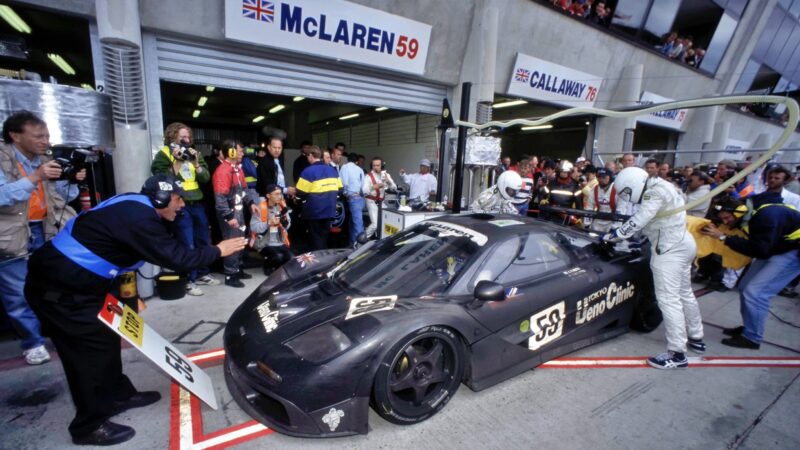It may look like a McLaren, but what you’re looking at here is something entirely more nuanced and very special. This is the Lanzante 95-59, a three-seater sports car that is the British firm’s boldest project to date, and it just broke cover at the 2025 Goodwood Festival of Speed.
Three weeks ago, we teased this carbon-clad tribute with glimpses of its sculpted bodywork, LED tail lights, and that signature floating wing. Now, here it is in full view, and while it borrows its bones from McLaren’s 750S, it has been completely reimagined with one clear inspiration: the 1995 Le Mans-winning McLaren F1 GTR chassis #59 run by Lanzante themselves and piloted by Yannick Dalmas, Masanori Sekiya, and JJ Lehto. Hence, the name: 95-59. For some context, this is also the same outfit that has turned P1 GTRs into road cars.


Now, at first glance, the 95-59 appears to carry familiar McLaren proportions, but look closer and everything’s been tightened. The new front end replaces the 750’s pinched lights with a carbon-clad fascia. From the side, it’s a combination of painted surfaces that overlap with sunken carbon insets and subtly aggressive bodywork.
Much of that credit goes to Paul Howse, the former McLaren designer behind the P1 and 720S, who styled the 95-59 with seamless surfacing and purposeful aerodynamics. Everything that’s carbon serves a purpose. Everything that’s painted flows in one unbroken motion. A highlight is the pillar-mounted mirrors, an option on the McLaren F1. At the back? Active aero, a central spine, and a race-grade exhaust system visually reinforce the car’s single most radical departure: its seating layout.
Yes, this is a three-seater, but unlike the stretched Speedtail, the 95-59’s carbon tub has been completely reengineered to accommodate the iconic McLaren F1-style layout: with the driver front and center, flanked by two slightly staggered passenger seats. This required moving the pedal box, heating system, and even reshaping the fuel tank to maximize range.
The result? A supercar with a 20-gallon tank, enough luggage space upfront, and a curb weight of just 2,755 pounds, which is frankly remarkable for a modern twin-turbo V8 sports car and comes close to the McLaren F1’s 2,513 pounds. Lanzante wanted to create a supercar that was usable in the real world.
As for the powerplant, it’s still the familiar 4.0-liter McLaren V8 under the skin, which now produces over 850 horsepower, 100 more than the 750S. Based on customer demand and feedback, there are no hybrid systems, no electric trickery here, just mechanical purity with long legs and the ability to tour cross country. But make no mistake: this car is so much more than a tribute. It’s a challenge to over-complicate and define what a driver’s car should be in 2025.
Only 59 examples will ever exist and for those lucky enough to get their hands on this for £1.3 million ($1.77 million) creation, they will be part of a highly exclusive club who have the privilege of owning a car that shares its basic ethos with other three-seater exotics like the McLaren F1 (+$20 million), McLaren Speedtail (~2.5 million) and the Gordon Murray T.50 (~$2.3million), all at a slightly more attainable price-point.
Source: Lanzante, McLaren

